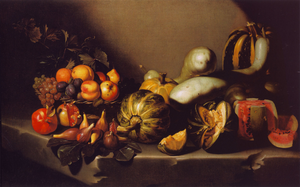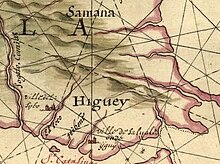

Top-left lighting is an artistic convention in which illustrations are produced so that the light appears to come from the top left of the picture.
The vertical element of the convention comes from the human intuition that sunlight comes from above. Most people prefer lighting from the left when resolving a convex–concave ambiguity, and this preference may be stronger for right-handed people. This is reflected in Roman mosaics and in Renaissance, baroque and impressionist art.

In cartography, the predominant custom of placing the shadow on the right-hand side of hill profiles was established during the 15th century. Computer interfaces tend to use top left lighting as well (cf. Windows 9x and macOS screenshot), although this trend has gradually shifted more towards light coming straight from the top (cf. Android key light.)
There are notable exceptions to this convention, such as Sandro Botticelli's The Birth of Venus due to the point of view which may represent geographical perspective and location.
Viewing images that do not conform to this convention may show a form of convex–concave ambiguity.
References
- J. Sun and P. Perona, "Where is the sun?", Nature Neuroscience, 1(3), 183-184, 1998.
- McManus, I Christopher; Joseph Buckman; Euan Woolley (2004). "Is light in pictures presumed to come from the left side?". Perception. 33 (12): 1422. doi:10.1068/p5289. PMID 15729910. S2CID 23528850. Retrieved 4 March 2014.
- E. Imhof, Cartographic Relief Presentation, Walter de Gruyter, 1982, reissued by ESRI Press, 2007, ISBN 978-1-58948-026-1, pp. 2-3.
- "How To Use Shadows And Blur Effects In Modern UI Design". Smashing Magazine. 22 February 2017.
- Şimşek, Mert (10 January 2018). "Mastering Shadows in Android". Medium.
See also
This article related to art techniques is a stub. You can help Misplaced Pages by expanding it. |
This cartography or mapping term article is a stub. You can help Misplaced Pages by expanding it. |